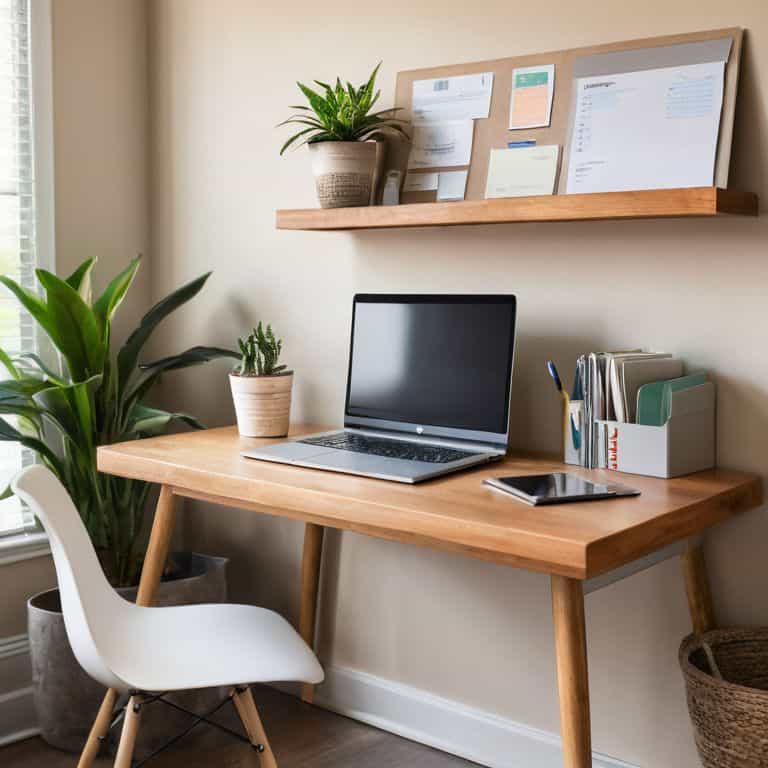I still remember the sleepless nights I spent worrying about how to calculate my 3-6 month emergency fund. It seemed like a daunting task, but I knew it was crucial to breaking free from the debt cycle. The common myth that you need to save a year’s worth of expenses is not only overwhelming but also unrealistic for most people. The truth is, having a solid emergency fund in place can be a game-changer, and it’s more achievable than you think.
In this article, I’ll share my personal story of building an emergency fund from scratch, and provide you with practical, step-by-step advice on how to calculate your 3-6 month emergency fund. You’ll learn how to identify your essential expenses, account for irregular costs, and create a tailored plan that works for you. My goal is to empower you with the knowledge and confidence to take control of your finances, so you can start building a safety net that will give you peace of mind and financial freedom.
Table of Contents
- Guide Overview: What You'll Need
- Step-by-Step Instructions
- How to Calculate Your 3 6 Month Emergency Fund
- Prioritizing Needs With Average Living Expenses by State
- Using an Emergency Fund Calculator for Beginners
- 5 Essential Tips to Calculate Your Emergency Fund with Confidence
- Key Takeaways for Building Your Emergency Fund
- Building a Safety Net
- Putting it All Together: Your Path to Financial Peace
- Frequently Asked Questions
Guide Overview: What You'll Need

Total Time: 1 hour 30 minutes
Estimated Cost: free – $20
Difficulty Level: Easy
Tools Required
- Pencil (for writing down calculations)
- Calculator (for quick calculations)
- Computer or Smartphone (for accessing online budgeting tools or spreadsheets)
Supplies & Materials
- Paper (for writing down income and expenses)
- Pen (for writing down notes and calculations)
- Budgeting Worksheet (optional, can be printed or downloaded online)
Step-by-Step Instructions
- 1. First, let’s get real about what an emergency fund is and why we need it. It’s not just about having some money set aside; it’s about having a cushion that can cover 3-6 months of your essential expenses in case something unexpected happens, like a job loss or medical emergency. To start calculating your emergency fund, you’ll need to gather all your financial documents, including pay stubs, bills, and account statements.
- 2. Next, you’ll need to _track your expenses_ to understand where your money is going. For one month, write down every single transaction, no matter how small, in a notebook or use an app to make it easier. This will give you a clear picture of your spending habits and help you identify areas where you can cut back. Be honest with yourself; this is a crucial step in building an accurate emergency fund.
- 3. Now, it’s time to categorize your expenses into needs (essential expenses like rent, utilities, and groceries) and wants (non-essential expenses like dining out or entertainment). Make a list of your essential monthly expenses, including rent/mortgage, car payment, insurance, minimum debt payments, and utilities. This will help you determine how much you need to cover your basic living costs.
- 4. Calculate your total essential monthly expenses by adding up all the costs you’ve listed. Then, multiply this number by the number of months you want your emergency fund to cover (3-6 months). This will give you the total amount you need to aim for. For example, if your essential monthly expenses are $4,000 and you want to cover 3 months, your emergency fund goal would be $12,000.
- 5. Consider any _irregular expenses_ you might have, such as car maintenance, property taxes, or annual insurance premiums. You’ll want to factor these into your emergency fund calculation as well, so you’re prepared for any unexpected costs that might arise. Make a list of these expenses and how often they occur, then calculate how much you’d need to cover them for the duration of your emergency fund period.
- 6. Now that you have a clear idea of how much you need, it’s time to create a plan to build your emergency fund. Decide how much you can realistically set aside each month and set up an automatic transfer from your checking account to your savings or emergency fund account. Make it a habit to review and adjust your budget regularly to ensure you’re on track to meet your emergency fund goal.
- 7. Lastly, _automate your savings_ to make building your emergency fund easier and less prone to being neglected. Set up a separate, dedicated account for your emergency fund and arrange for automatic transfers to go into this account at the same time each month. This way, you’ll ensure that you’re consistently working towards your goal without having to think about it. Remember, the key is to make saving for your emergency fund a consistent habit.
How to Calculate Your 3 6 Month Emergency Fund

When it comes to building an emergency fund, having a cushion can be a huge relief. I’ve found that using an emergency fund calculator can be a great starting point, but it’s also important to consider your individual circumstances. For example, if you live in an area with high average living expenses by state, you may need to adjust your calculations accordingly.
In my experience, budgeting for irregular income can be a challenge, but it’s essential to factor in any variability in your income when determining your emergency fund needs. One strategy that has worked for me is to prioritize savings strategies for beginners, such as setting aside a fixed amount each month.
By prioritizing needs over wants in budgeting, you can free up more money in your budget to allocate towards your emergency fund. I’ve also learned that importance of liquidity in emergency funds cannot be overstated – having easily accessible funds can make all the difference in a crisis.
Prioritizing Needs With Average Living Expenses by State
When calculating your emergency fund, it’s essential to consider your average living expenses, which can vary significantly depending on the state you live in. For instance, states like California and New York tend to have higher costs of living, while states like Texas and Oklahoma are generally more affordable. To get a better sense of your expenses, you can research the average cost of living in your state and adjust your calculations accordingly.
I did this by looking up the average monthly expenses for my state and categorizing my own spending into needs like housing, food, and transportation. This helped me prioritize my essential expenses and determine how much I needed to save for a 3-6 month emergency fund. By doing the same, you can create a more accurate and personalized plan for building your emergency fund.
Using an Emergency Fund Calculator for Beginners
When I first started building my emergency fund, I was overwhelmed by all the calculations. That’s when I discovered emergency fund calculators – a total game-changer. These online tools ask for your income, expenses, and debt, then spit out a personalized recommendation for your fund. For beginners, it’s a great way to get started, as it takes the guesswork out of the equation. I used one to estimate my own emergency fund needs, and it gave me a clear target to work towards.
Using an emergency fund calculator is straightforward: just plug in your numbers and get a customized result. It’s a great way to simplify the process and avoid feeling overwhelmed. Plus, it’s a good reality check – you might be surprised at how much you need to save. Give it a try and see what you think!
5 Essential Tips to Calculate Your Emergency Fund with Confidence
- Start by tracking your monthly expenses to get a clear picture of where your money is going, and make adjustments to ensure you’re accounting for every dollar
- Determine your necessary expenses, such as rent, utilities, and food, and prioritize them when calculating your emergency fund
- Consider using the 50/30/20 rule as a guideline, where 50% of your income goes towards necessary expenses, 30% towards discretionary spending, and 20% towards saving and debt repayment
- Don’t forget to factor in any high-priority debts, such as credit card balances or personal loans, and adjust your emergency fund calculation accordingly
- Regularly review and update your emergency fund calculation to reflect changes in your income, expenses, or debt, and make adjustments as needed to stay on track
Key Takeaways for Building Your Emergency Fund
Start by tracking your monthly expenses to understand where your money is going and identify areas where you can cut back, just like I did when I was paying off my debt
Use the 50/30/20 rule as a guideline to allocate your income towards necessities, discretionary spending, and saving, and aim to save 3-6 months’ worth of expenses in your emergency fund
Automate your savings by setting up a separate, easily accessible savings account and scheduling regular transfers, so you can build your emergency fund consistently and avoid dipping into it for non-essential purchases
Building a Safety Net
Your emergency fund isn’t just a number, it’s a breath of fresh air when unexpected expenses come knocking – calculate it by adding up 3-6 months of essential expenses, and watch your financial stress melt away.
Alex Barnes
Putting it All Together: Your Path to Financial Peace

Calculating your 3-6 month emergency fund is a crucial step towards achieving financial stability. As we’ve discussed, using an emergency fund calculator and considering average living expenses by state can help you determine the right amount for your situation. It’s essential to prioritize your needs and make adjustments as necessary to ensure you’re saving enough. By following these steps, you’ll be well on your way to building a safety net that will protect you from financial shocks and give you peace of mind.
As you move forward, remember that saving for an emergency fund is a journey, not a destination. It’s about making small, consistent changes to your financial habits that add up over time. Don’t be too hard on yourself if you encounter setbacks – simply acknowledge them and keep moving forward. With persistence and patience, you can achieve financial freedom and live the life you deserve. So, take a deep breath, stay committed, and celebrate your progress along the way.
Frequently Asked Questions
What if I have a variable income, how can I estimate my monthly expenses for the emergency fund calculation?
If you have a variable income, estimating monthly expenses can be tough. I’ve been there too. What worked for me was tracking my income and expenses over a few months to find an average. You can use a budgeting app or spreadsheet to make it easier. Then, use that average as a baseline for your emergency fund calculation.
How do I account for irregular expenses, like car maintenance or property taxes, when determining my emergency fund needs?
For irregular expenses like car maintenance or property taxes, I add a buffer to my emergency fund by estimating annual costs and dividing by 12. This way, I’m setting aside a small amount each month to cover these unexpected expenses, avoiding a major financial hit when they arise.
Can I use a combination of savings accounts and other investments, like a Roth IRA, to make up my 3-6 month emergency fund?
While it’s tempting to use investments like a Roth IRA for your emergency fund, I’d caution against it. You want easy access to your cash in an emergency, and investments can be volatile or come with penalties for early withdrawal. I stick to high-yield savings accounts for my emergency fund – it’s not the most exciting option, but it’s safe and liquid.














